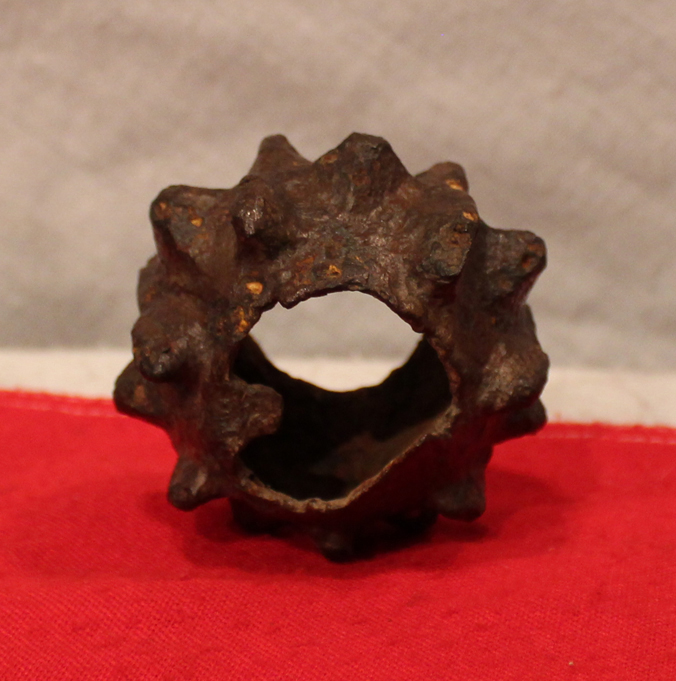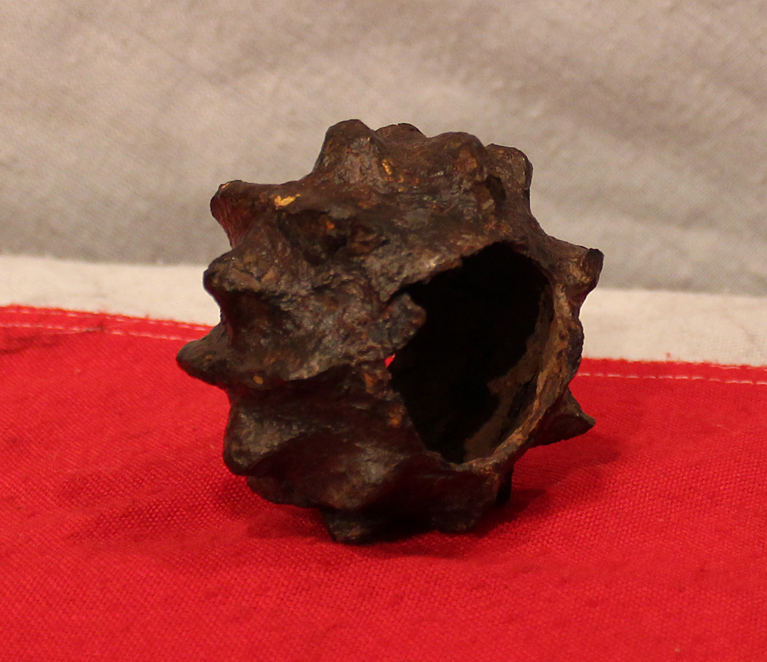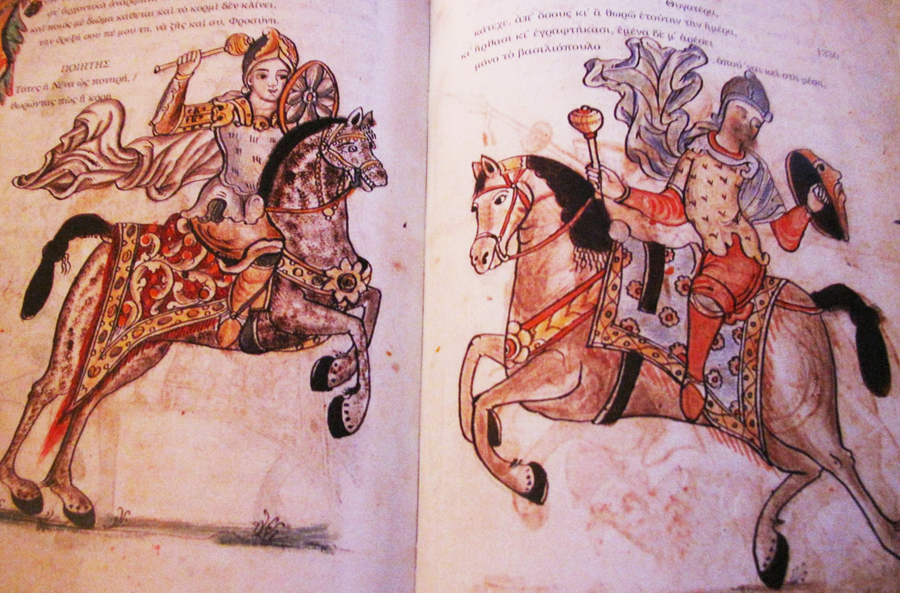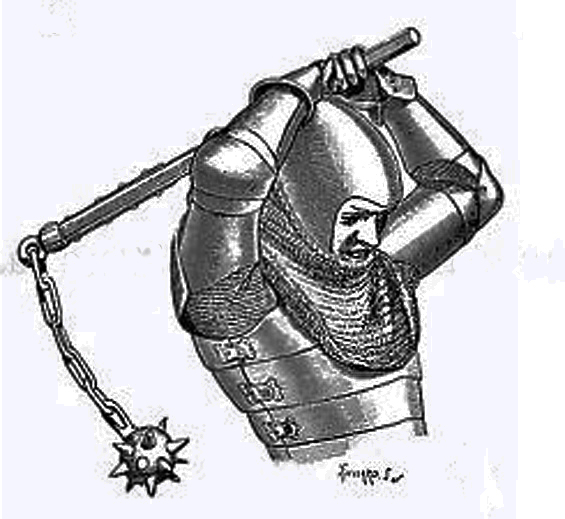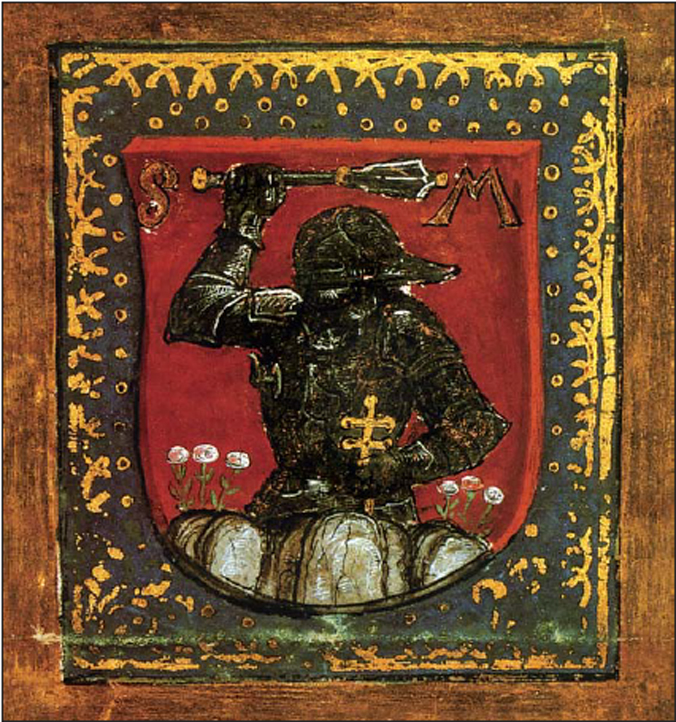A Superb, Medieval & Most Rare, 12th-13th Century Crusader Knights Iron Flanged Battle Mace & Scorpion Flail Mace Head
A rare example of mace, and, apparently, not many surviving examples of this type of flanged mace are still in existence.
An offensive battle mace that would be an amazingly effective piece against armour, helmet or shield. In almost spherical form with multi layered protruding flanges in hollow-cast iron that could be mounted on a haft, or with a chain and haft and used as a battle flail. They were also carried as a symbol of power and rank, as it is so now, for example such as the cosmetically huge parliamentary mace and the Queen's great mace of state being just two examples. In the Crusades era this was, on occasion, also an ecclesiastic weapon used by Bishops Popes, for an ecclesiastical warrior was not allowed to draw blood in combat a most novel distinction but far more usually used by mounted knights in noble combat. a flail mace for extra reach on horseback. Unlike a sword or haft mounted mace, it doesn't transfer vibrations from the impact to the wielder. This is a great advantage to a horseman, who can use his horse's speed to add momentum to and underarmed swing of the ball, but runs less of a risk of being unbalanced from his saddle.
It is difficult to block with a shield or parry with a weapon because it can curve over and round impediments and still strike the target. It also provides defense whilst in motion. However the rigid haft does have the advantage as the flail needs space to swing and can easily endanger the wielder's comrades.
Controlling the flail is much more difficult than rigid weapons.On a Flail it had the name of a Scorpion in England or France, or sometimes a Battle-Whip. It was also wryly known as a 'Holy Water Sprinkler'. King John The Ist of Bohemia used exactly such a weapon, as he was blind, and the act of 'Flailing the Mace' meant lack of site was no huge disadvantage in close combat. Although blind he was a valiant and the bravest of the Warrior Kings, who perished at the Battle of Crecy against the English in 1346. On the day he was slain he instructed his Knights both friends and companions to lead him to the very centre of battle, so he may strike at least one blow against his enemies. His Knights tied their horses to his, so the King would not be separated from them in the press, and they rode together into the thick of battle, where King John managed to strike not one but at least four noble blows. The following day of the battle, the horses and the fallen knights were found all about the body of their most noble King, all still tied to his steed.
During the Middle Ages metal armour such as mail protected against the blows of edged weapons. Solid metal maces and war hammers proved able to inflict damage on well armoured knights, as the force of a blow from a mace is great enough to cause damage without penetrating the armour. Though iron became increasingly common, copper and bronze were also used. Pictures in the gallery, some medieval, showing them used in combat. The mace head is approximately the size of a slightly flattened tennis ball.
Code: 22686
1145.00 GBP


